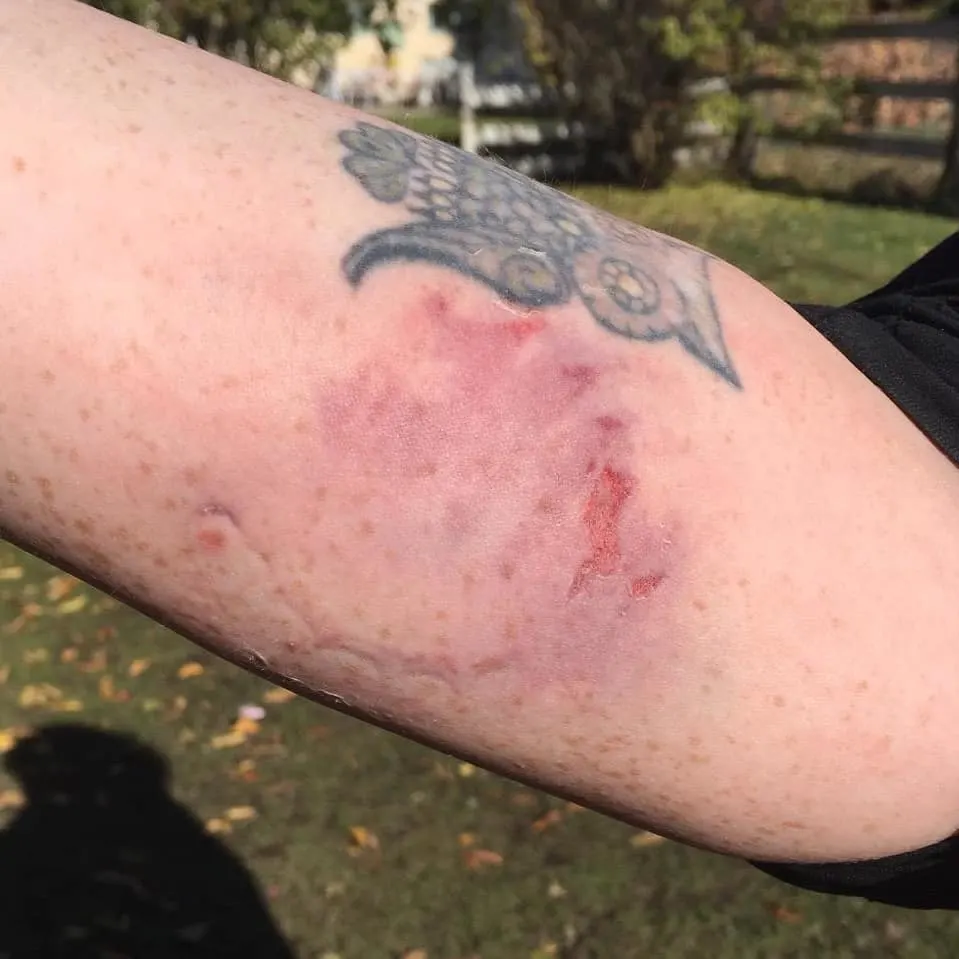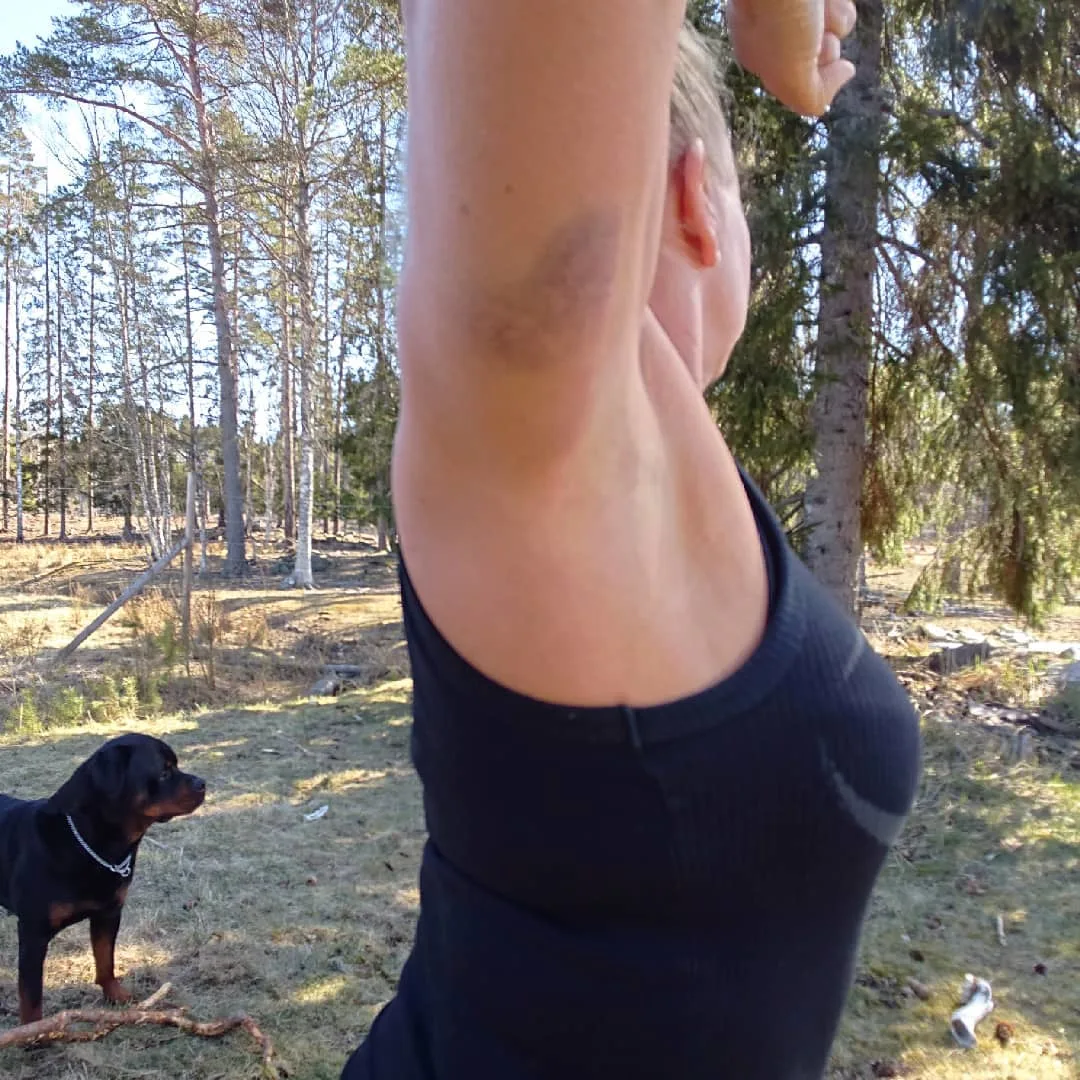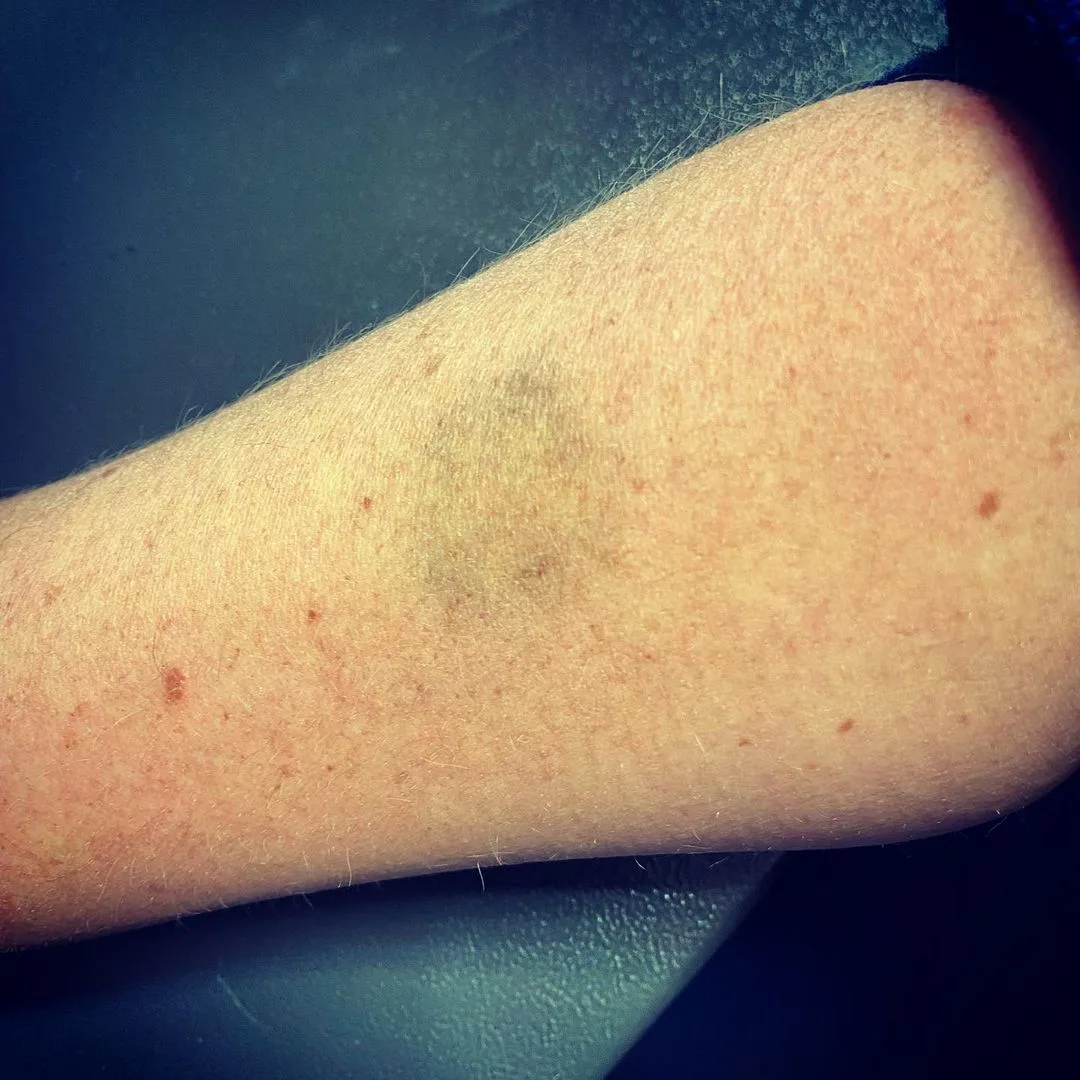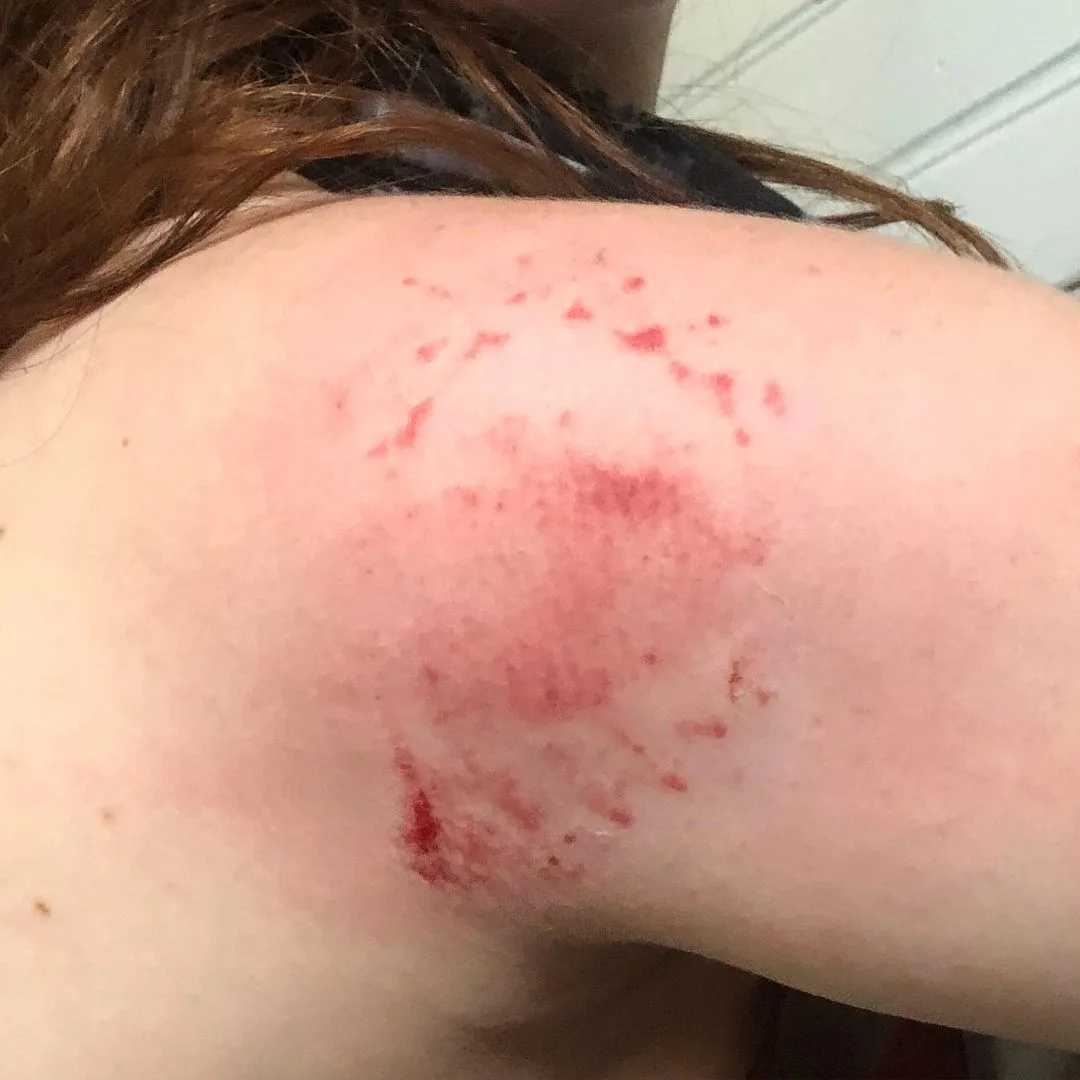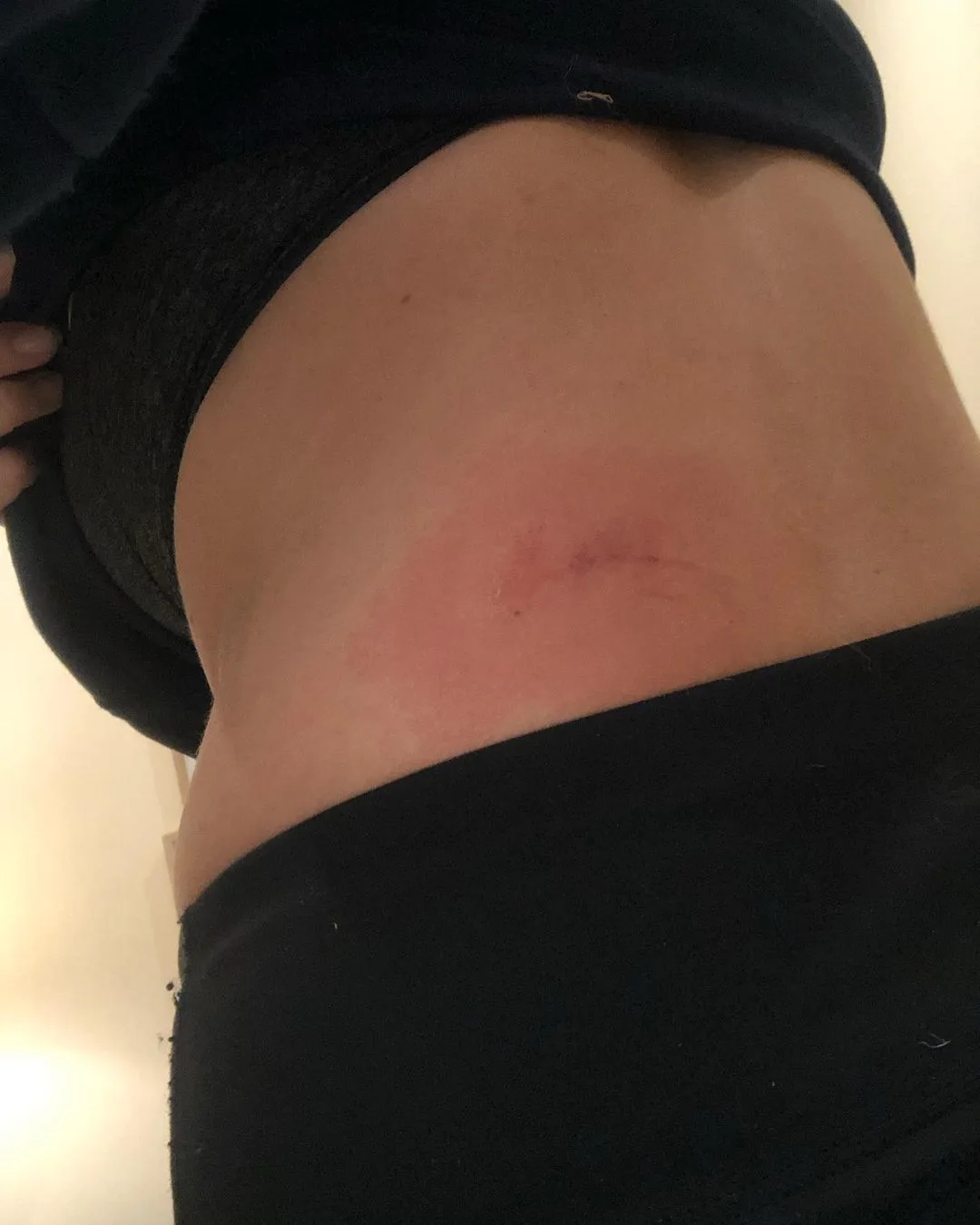Many new riders are concerned about horse bites, but serious bites from horses are very rare! In this article, you’ll learn more about horse bites, including how to avoid horse bites, what to expect if you get bitten by a horse, and some common reasons horses bite.
But first, let’s cover the basics:
- 📊 Of all reported injuries involving horses, approximately 3% to 4.5% are horse bites. 1 Most horse related injuries are from falling off a horse.2
- 🩹 Most horse bites do not break the skin because horses have blunt teeth that have evolved for chewing grass and hay. According to nih.gov, most horse bites heal without emergency medical care.3 Rarely, horse bites crush or amputate a finger.4
- 😷 Approximately 600 (( Brouwer, M. C., Kasanmoentalib, E. S., Opstelten, F. W., van der Ende, A., & van de Beek, D. (2010). A horse bite to remember. The Lancet, 376(9747), 1194. )) to 1800 (( Thomas, K. E., Annest, J. L., Gilchrist, J., & Bixby-Hammett, D. M. (2006). Non-fatal horse related injuries treated in emergency departments in the United States, 2001–2003. British journal of sports medicine, 40(7), 619-626. )) people in the USA end up in the ER each year due to horse bites
- 😬The bite force of a horse can be 500 psi! (( University of Guelph. Ontario, Canada. The Modern Day Horse: Teaching Notes. Retrieved May 12, 2023. )) However, horses rarely bite hard. Most horse bites are accidental “nibbles” or warning “nips” which involve much less pressure.
What To Do If You Are Bitten by A Horse
Step 1: If a horse bites you, leave the area to prevent further injury. Move to where you are protected from the horse by a fence or gate.
Step 2: Assess the injury & apply first aid.
- If the skin isn’t broken, apply an ice pack to reduce bruising.
- If the skin is broken but it’s a minor bite, clean the wound with warm water and mild soap. Then, apply a topical antibiotic and bandage the bite.
- If the horse bite is bleeding heavily or the pain is severe, seek immediate medical attention.
Step 3: Notify the horse’s owner. Your bite might be part of a behavior pattern. If the owner is informed, they can take action to get the horse additional training or changes in its environment.
Curious about what Horse Bites look like?
Several riders in our community have given permission for us to post pictures of horse bites they’ve experienced. Because some viewers might not want to see images of horse bites, you’ll need to unlock this content below:
Basics to Know About Horse Bites:
Biting is typically a reaction to fear, discomfort, or frustration. Learning to read horse body language and maintaining safety boundaries can significantly reduce your chances of getting bitten. Horses communicate through body language, and a bite is one way they communicate that they’re uncomfortable or upset when gentler communication hasn’t worked.
A common fear among beginner riders is that a horse might bite their finger off. While horses have strong jaw muscles, this is an extreme scenario that is highly unlikely to occur. Typically, a horse bite might result in bruising or minor lacerations.5
Learning the proper way to hand feed a horse– or avoiding hand feeding completely- will greatly reduce your risk of getting a horse bite injury. “Many bites are actually the result of inexperienced people getting their fingers in the way rather than the horse deliberately biting them.”6
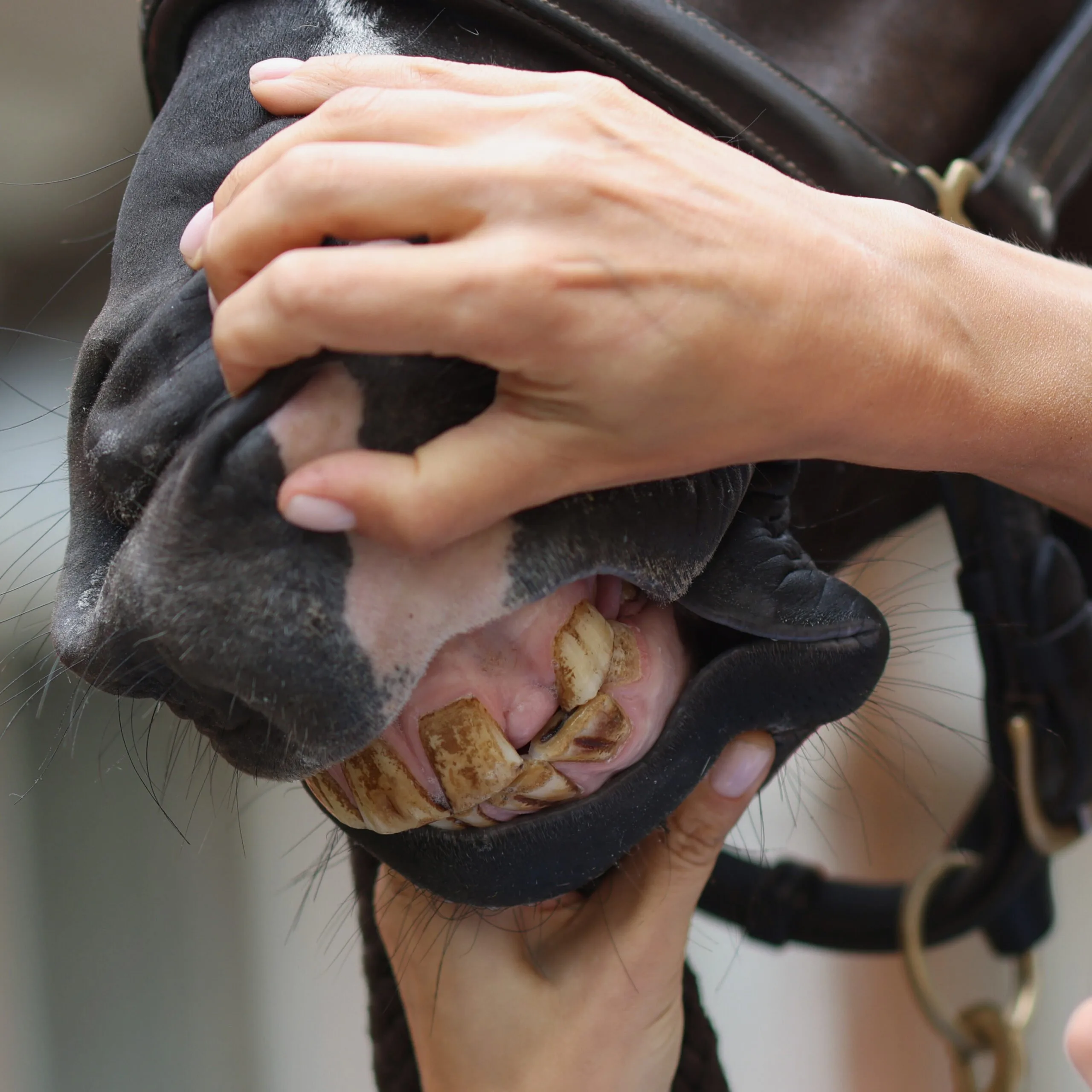
4 Reasons Why Horses Bite
According to Horse Safe: A Complete Guide to Equine Safety6 horses bite for four primary reasons: immaturity, poor training, anxiety, and irritation.
👶 Horses That Bite Due to Immaturity or Play
In the wild, bites are one way that horses communicate with each other and learn about the world around them. A horse that is well handled when they are a foal (aka a baby horse) will grow up to be a respectful horse that is less likely to bite. Horses must be taught that biting is not acceptable communication with humans.
🙃 Horses That Bite Due to Poor Training
Often, inexperienced owners and riders accidentally teach their horses to bite. There are many ways to accidentally train a horse to bite, including feeding treats incorrectly, allowing a horse to give “love bites”, or accidentally responding with a reward when a horse bites.
🥺 Horses That Bite Due to Anxiety
One of the most common scenarios that leads to a horse bite is when a human approaches a horse that does not want to be approached. When a horse feels unsafe, they communicate through their body language. These cues might look like backing away, tensing up, and pressing their ears back against their head. Pursuing a horse, instead of backing off, when a horse is displaying this body language often leads to an anxiety-provoked horse bite.
😠 Horses That Bite Due to Irritation
Biting in response to anger or irritation is a very normal horse behavior. This is how horses tell other horses in the herd to “back off” or “cut it out” when body language doesn’t get their message across.
Early horse training and handling include helping a horse understand that biting is not allowed as a way to communicate with people. Still, many horses will adopt the bad habit of reaching around to bite a human when they’re getting tacked up or being worked on by a vet or farrier.
Horses Can Bite Hard, But Usually Don’t: Horse Bite Force
Horses can bite hard– but they usually don’t! The vast majority of horse bites are nibbles, not chomps.
While a hard horse bite can take a finger clean off, most bites are warning bites that are much more gentle. Think of it like this: horses communicate through bites on a similar spectrum to how people communicate with their hands: friendly gestures, useful actions, and irritated shoves are far more common than punches. A hard bite is usually warranted- at least, from the horse’s perspective!
Fact: horses can use their teeth very gently. In a common behavior called mutual grooming, horses gently bite each other as a way to bond.7
Because a horse’s jaw aligns the top and bottom teeth to meet in an even, flat row, horses have a very powerful bite. Horse teeth are designed to crush and grind, not bite and tear. So a horse bite is more likely to be a crush injury than a puncture.8
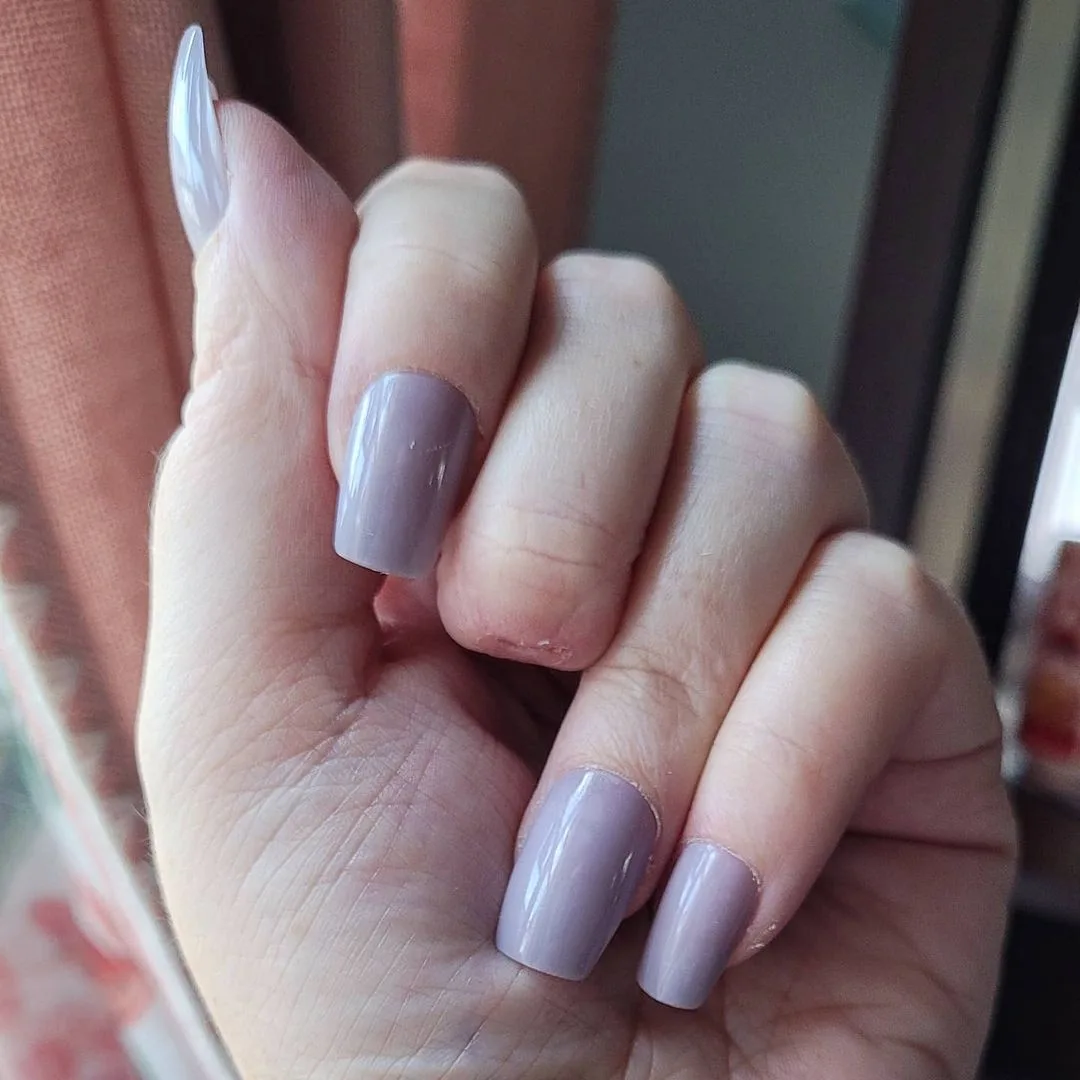
A horse’s jaw is so strong that it can press down with a force of about 500 pounds on a square inch!9 Compare that with 200 psi for human bites and 235 for Pit Bull dog breed.9
Human Bite Force
200 psi
Dog Bite Force
235 psi
Horse Bite Force
500 psi
How to Get a Horse to Stop Biting
Stop Biting Humans
When a horse begins habitually biting humans, it’s time for serious retraining. Refer to our article on how to stop horse biting. If, however, human behavior is the cause- like feeding treats improperly- the right intervention may be a combination of retraining and enforcing a no-treat policy.
For suburban horse owners, signs may be appropriate around the perimeter of the property. Signs stating “Caution: Horses Bite” may deter contact over the fence. Electric fencing may also be appropriate. Installing an electric fence 6 ft within the current perimeter fencing can eliminate all contact between horses and neighbors, reducing legal liability.
Stop Biting Other Horses
Horses bite each other for many reasons. Horses bite other horses when they’re irritated, and also for social bonding in a herd. When horses bite each other in this way, it actually lowers their heart rate!7
If horses bite one another hard enough to break the skin or leave bald patches, it’s best to separate the individuals. Some horses just don’t get along!
Stop Biting Wood and Other Objects
Sometimes, horses bite objects such as wood fences, their own bodies, or even clothes. This behavior, known as cribbing, is usually due to boredom, nutritional deficiencies, or digestive discomfort. Regular exercise, a balanced diet, and access to chewable toys can help curb this habit. Horses chewing on wood fences can be particularly irritating for owners.
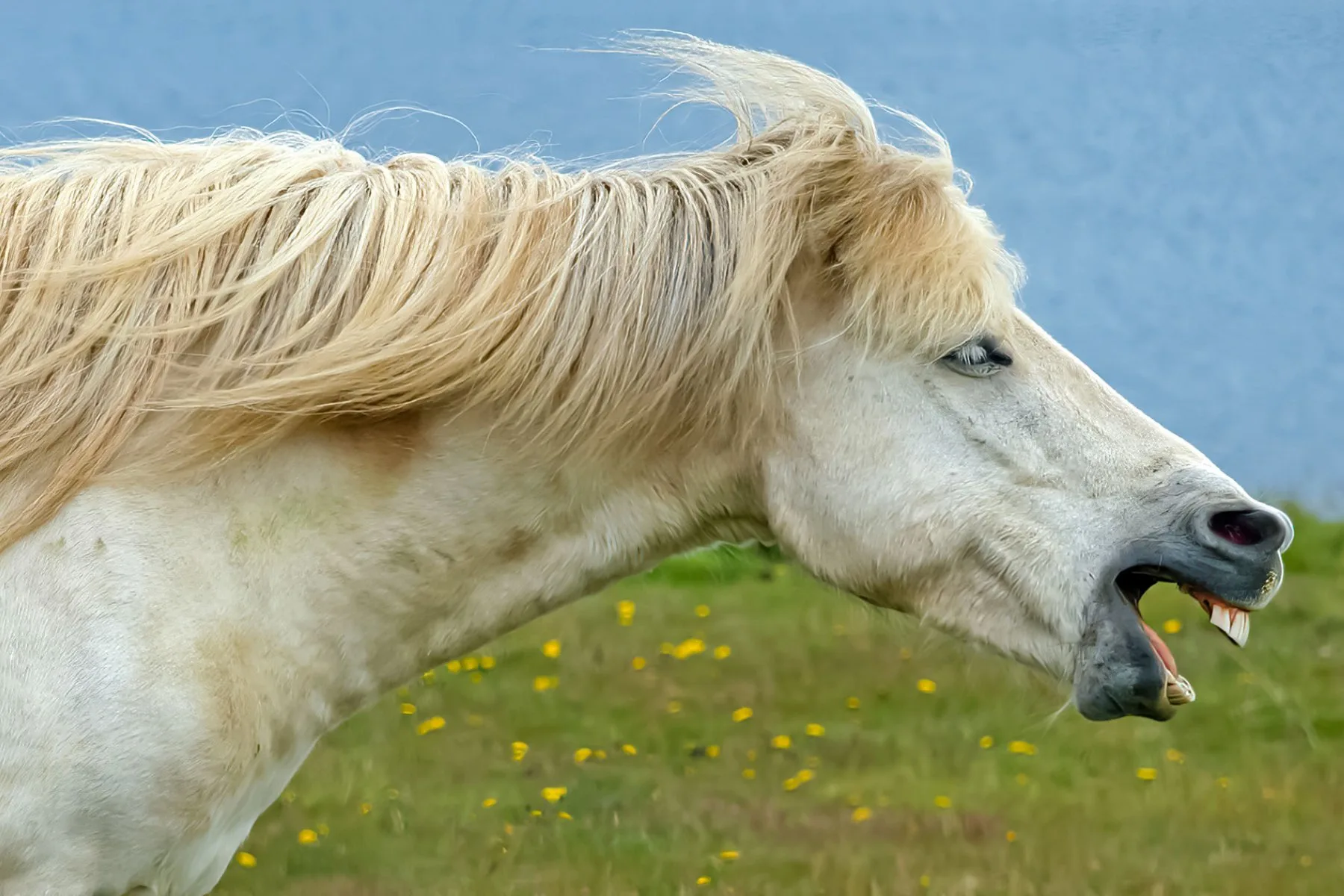
Horse Bites Hurt!
Yes, horse bites hurt! With up to 500 pounds of pressure per inch in their jaws, a horse bite can cause severe pain and leave a mark.
In my decades of experience as a rider and riding coach, I’ve had a few horse bites. Some were minor- little more than a light nip. My worst bite was from a white mare while checking her udders after foaling. While even that hard bite did not break the skin, the bruising and tissue damage was intensely painful. A horse bite bruise may last for more than a month.
What does a Horse Bite Look Like?
Horses lack incisors, so horse bites often look like large inflamed or bruised areas that may or may not have flat indentations on a circular pattern, where teeth connected. This pattern is most easily seen on fleshy areas of the human body, like the stomach, thighs, or shoulder.
When a horse bites a hand or head, however, it is harder to say what the bite will look like.
Horse bites vary in appearance according to how hard the horse bit down, how fresh the wound is, and where the person was bitten.
Parting Thoughts
In summary:
- Serious horse bites are rare.
- While horses have a strong bite force, most bites are accidental nibbles or warning nips with less pressure.
- If you’re bitten, leave the area, assess the injury, and seek medical attention if necessary.
- Never pet a horse without permission.
Understanding why horses bite, such as fear, discomfort, lack of training, or immaturity, can help prevent bites before they happen. Proper handling, recognizing body language, and avoiding hand feeding treats can greatly reduce the risk.
- Langley, R., & Morris, T. (2009). That horse bit me: zoonotic infections of equines to consider after exposure through the bite or the oral/nasal secretions. Journal of agromedicine, 14(3), 370-381. cited in Santoshi, J. A., & Leshem, L. (2014). Open fracture of the forearm bones due to horse bite. Journal of orthopaedic case reports, 4(1), 7. [↩]
- Gausche-Hill, M., Hockberger, R., Walls, R. (2017). Rosen’s Emergency Medicine – Concepts and Clinical Practice E-Book. United States: Elsevier Health Sciences. [↩]
- Santoshi, J. A., & Leshem, L. (2014). Open fracture of the forearm bones due to horse bite. Journal of orthopaedic case reports, 4(1), 7. [↩]
- Rudari, H., Jaha, L., Koshi, A., & Vokrri, L. (2021). Severe injury to the brachial neurovascular bundle and muscles due to a horse bite: a case report. Journal of medical case reports, 15(1), 1-5. [↩]
- P. Edixhoven, S.C. Sinha, D.J. Dandy, Horse injuries, Volume 12, Issue 4, 1981, Pages 279-282, ISSN 0020-1383. [↩]
- Horse Safe: A Complete Guide to Equine Safety. (2005). (n.p.): Landlinks Press. Page 71 [↩] [↩]
- McGreevy, P. (2012). Equine Behavior: A Guide for Veterinarians and Equine Scientists. United Kingdom: Saunders/Elsevier. [↩] [↩]
- Horse Safe: A Complete Guide to Equine Safety. (2005). (n.p.): Landlinks Press. Page 72 [↩]
- University of Guelph. Ontario, Canada. The Modern Day Horse: Teaching Notes. Retrieved May 12, 2023. [↩] [↩]


